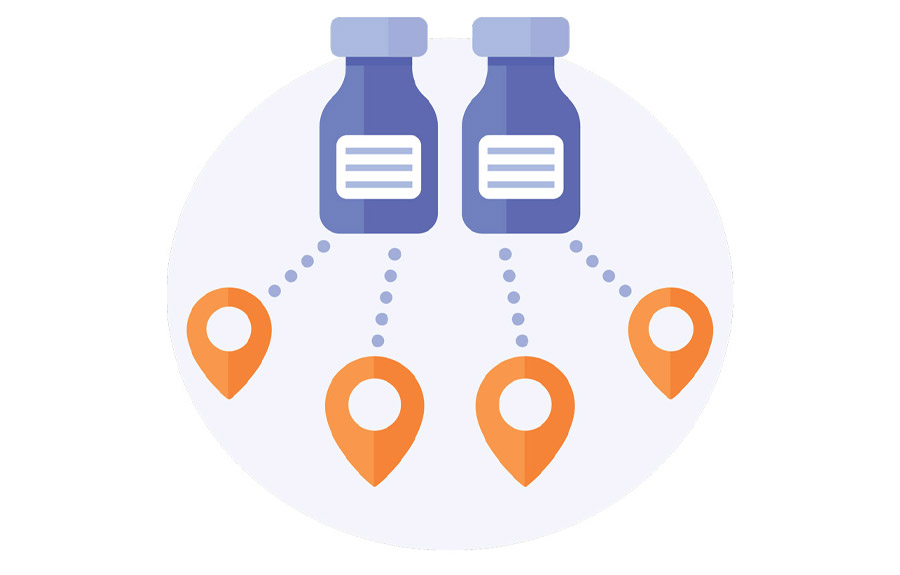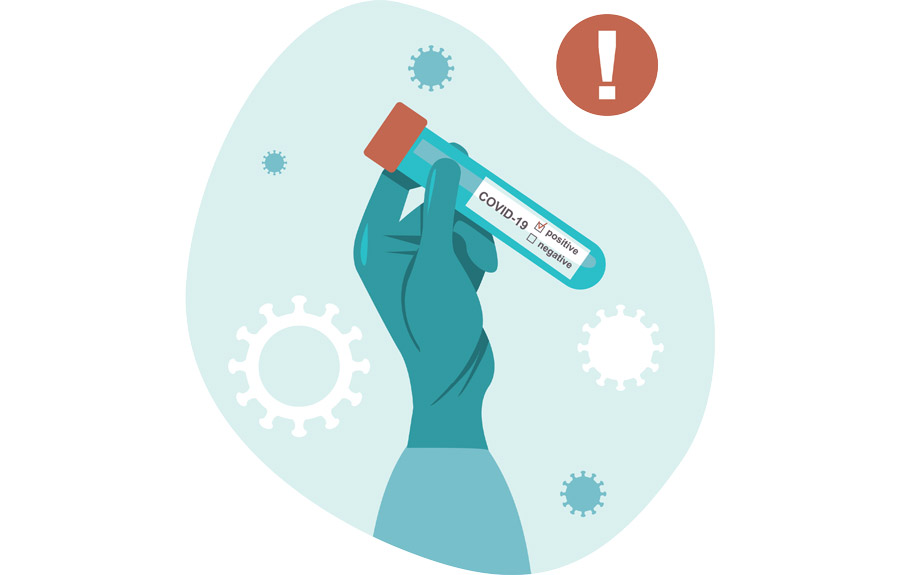Since the last issue of HIV Basics in 2021, several changes have impacted HIV treatment, research and health risks. Some developments (HIV disparities, weight gain with INSTIs and anal cancer awareness) are a continuation of trends, with a renewed focus but no clear answers. Others (such as doxy-PEP) are potential game changers for health care providers and people living with HIV.
Moving to a language of care
In July, the 12th International AIDS Society Conference on HIV Science (IAS 2023) for the first time had no presentations referring to people living with HIV (PLHIV) as “HIV infected.” It was a victory for advocates of using UNAIDS terminology guidelines, which were published in 2015. Proponents of “people first” language have long decried the word “infected” as not only stigmatizing but dehumanizing. The People First Charter was launched in 2021 to push for the removal of stigmatizing language in HIV research, including “mother-to-child transmission.”
Language evolves. In the 1980s, people living with HIV were called victims of the virus. The research community is slower to change, however. Researchers in a study published in 2022 looked at person-centered language in HIV-related research published between 2017 and 2021 and found that 57% of the HIV-related articles used terms “HIV-infected” and even “AIDS-infected,” and 30% of the publications used the rather antique language of “HIV patient” or “AIDS patient.” Using the term “AIDS-infected” is especially troubling because it doesn’t follow science: AIDS is an advanced stage of HIV and not something one can catch.
Despite the slower evolution of some research publications, outlets that report on HIV, including Living Positively, are committed to a language of care, rather than dismissal.
A push for more inclusive clinical trials
People from racial and ethnic minority groups have perennially been underrepresented in clinical research. The U.S. Food and Drug Administration (FDA) has been aware of this and plans to require researchers to actively ensure greater diversity among trial participants.
Ensuring diversity in clinical trials is especially important in HIV research, where more than half of all people living with HIV globally are female, but less than 20% of those participating in HIV cure-related clinical trials. In the U.S., where African Americans are 13% of the population, they account for 42% of new HIV diagnoses.
Some researchers are offering suggestions for how to increase diversity in HIV treatment and cure trials. Karine Dubé at the University of North Carolina has been urging researchers to consider obstacles—such as jobs, transportation and family demands—that could prevent more diverse populations from participating. Some recommendations include asking the community how to best conduct the trials, and for publications to require demographic information. Lauren Cirrincione and her team at the University of Washington came up with suggestions for increasing participation of transgender and gender diverse (TGD) in randomized clinical trials:
- establishing or leveraging existing community and global advisory boards comprised of TGD community members
- enriching enrollment for transgender women
- modifying protocol language and recruitment efforts to include transgender men and nonbinary people in the study priority population.
HIV activists, including the Treatment Action Group, are also pushing for inclusion of PLWH in non-HIV related trials. TAG scored a big victory in 2020 with the addition of PLWH as part of Moderna’s phase 3 COVID-19 vaccine trials.
A greater urgency to fix HIV disparities
This is another good news/bad news trend: According to latest figures by the CDC, while the U.S. is making progress in prevention of HIV transmission, the gains are uneven, and these disparities will make it difficult for the U.S. to reach its goal of reducing new cases of HIV by 90% by the end of the decade.
PrEP is a key prevention tool that could make the difference. But although nearly 80% of white people who would benefit from PrEP are being prescribed it, only 21% of Hispanic/Latinx people who could benefit are getting a prescription. That prescription percentage drops to 11% among Black people who could benefit from PrEP.
There are no easy answers to the increasing disparities in who accesses PrEP. Raising awareness helps, but it doesn’t automatically translate into use, especially in communities with higher HIV stigma and anti-LGBTQ+ sentiment. One recent study out of the Duke University School of Medicine uncovered some specific reasons why PrEP uptake is so low among African Americans, including sociocultural (community/social network influences, stigma, medical mistrust) and structural factors (PrEP availability, accessibility, and PrEP engagement strategies). Researchers included some suggestions: “…future research should consider working directly with African American communities (leveraging social networks) to co-develop strategies for decreasing stigma, medical mistrust, and conspiracy beliefs among young African Americans. Additionally, to intervene at the organizational (institutional) level, PrEP should be integrated into routine primary care practice (especially those who serve cisgender women) to improve awareness and access, which can boost uptake.” Researchers also encouraged AIDS services organizations to hire more African Americans from local communities “who can draw upon insider community knowledge to assist ASOs to establish their presence within the community and scale up PrEP outreach efforts.”
‘Practice changing’ doxy-PEP for bacterial STIs
The use of doxycycline taken as post-exposure prophylaxis (PEP) is gaining interest among people who work in sexual health, based on a study that was stopped early, in 2022, due to its high efficacy. The trial found that doxy-PEP as a “morning-after” pill was highly effective in preventing syphilis, chlamydia and gonorrhea after unprotected sex, cutting the risk of these common STIs by up to two-thirds. Though it does not prevent HIV, mpox or other viral infections, this treatment regimen has been found to be highly effective in substantially reducing bacterial STIs in MSM and transgender women (TGW), regardless of their HIV status.
Although the CDC issued a response to the clinical trial, it hasn’t yet offered clinical guidance on doxy-PEP. However, clinics and jurisdictions, including Chicago’s Howard Brown Health, the San Francisco Department of Public Health and others, see the study results as “practice changing” and have moved forward in developing guidelines and protocols for the use of doxy-PEP.
In the era of Treatment as Prevention and PrEP, bacterial STIs among MSM and TGW have risen dramatically. Look for increasing recommendations of doxy-PEP among doctors who care for sexually active people, especially those who care for patients with HIV, in the future.
Anal cancer awareness for PLWH
In the general population, anal cancer is relatively rare, but among people living with HIV, it’s the fourth most common cancer. The likely reason is the human papillomavirus (HPV), which, as with HIV, can be transmitted more easily through anal intercourse. More than 90% of anal cancers are caused by HPV, specifically the HPV-16 strain, which can also cause anal and genital warts. Many people are able to clear HPV from the body without problems, but for some, especially those with suppressed immune systems—such as people living with untreated HIV—HPV may later develop into pre-cancerous lesions and eventually cancer.
Anal cancer screening through anal cytology (also known as a PAP smear) is not yet part of routine care for people living with HIV. But experts like Alan Nyitray, an associate professor of psychology and behavioral medicine at the Medical College of Wisconsin, say it should be. Nyitray said one reason it isn’t yet routine is the current lack of a national consensus recommending anal cancer screenings.
“Awareness of anal cancer is poor among gay and bi men,” Nyitray said. “Right now, there are too many barriers to anal cancer screening.”
While the U.S. Preventative Services Task Force (USPSTF) has stalled on recommending anal cancer screening for people at higher risk of anal cancer, Nyitray believes the USPSTF will move forward again, so that anal cancer will be on the radar of every practitioner who cares for PLWH. And he hopes the USPSTF will investigate biomarkers like HPV genotyping to find people who are at higher risk of anal cancer, regardless of their HIV status.
Caution over COVID-19 and mpox
According to the World Health Organization, PLWH have a 38% greater risk of developing severe or fatal COVID-19 compared to people without HIV. However, studies have shown that people with well-suppressed HIV face far fewer risks of serious complications from COVID. But considering the percentage of people in the U.S. who have HIV but don’t know it—an estimated one in five—and the continued unabated spread of COVID-19, PLWH would do well to be COVID cautious.
Although many people in the U.S. have caught COVID at least once, there is no “herd immunity.” Each infection is more likely to produce T cell exhaustion, which is disconcertingly problematic for people with already exhausted T cells. The CDC notes that re-infection can occur in as little as 90 days after initial infection, and that re-infections can sometimes be more severe. Vaccines and boosters have been effective in preventing death and serious illness for most, but they are not effective in preventing transmission of the virus. That’s a problem because even mild COVID can lead to debilitating long COVID in addition to higher risks of vascular and organ damage, and that’s true for people with or without HIV.
PLWH who have a low CD4 count are also at greater risk of serious complications from mpox, according to the CDC, and they are over-represented in current mpox cases. According to CDC data, of 38 deaths from mpox in the U.S. between May 10, 2022, and March 7, 2023, 94% were PLWH and most had advanced HIV. There are no data, however, suggesting that having HIV increases the likelihood of getting mpox when exposed to it.
One thing is clear: the health risks from COVID-19 and mpox—not to mention the myriad health risks from advanced HIV—underscore the importance of testing for and treating HIV.
More questions, but few answers, about weight gain with HIV meds
A top story in HIV medicine was excess weight gain experienced by some PLWH who take integrase inhibitors. These antiretrovirals are potent and have a high resistance barrier. And they’re very well tolerated, if you discount the weight gain. Recent studies have shown that one in six people gain at least 10% in body weight over one to two years after starting treatment.
Follow-up from the ADVANCE trial on antiretroviral therapies hasn’t concluded exactly why the start of integrase inhibitors—especially dolutegravir and bictegravir—appears to bring dramatic increases in weight, especially for Black women. That presents a thorny problem for people on treatment and the providers caring for them. If a person is underweight at the start of treatment, weight gain can be seen as a “return to health” effect. But for people with normal body weight at the start of treatment, weight gain could bring an increased risk of cardiovascular disease and diabetes. And people living with HIV are already at a higher risk of cardiovascular disease than the general public.
Shifting to long acting injectables… slowly
Possibly the biggest change since our last update on HIV basics is the wider availability of long-acting injectables for HIV treatment and for PrEP. With the promise to reduce the issue of adherence to pills, injectables have been billed as a game changer for treatment and prevention. Comprehensive data on how many people have ditched the pills and embraced injectables are hard to come by. But based on one study, uptake of LA-ART might be slower than anticipated. In an analysis of patients in one California HIV primary care clinic from 2021–2022, researchers found a little more than half of patients who expressed interest in LA-ART actually switched. The most common reasons for not changing were fear of injection site pain and the inability to receive follow-up injections in a timely manner. The results of this study suggest that clinics and practitioners should consider possible limitations in uptake of injectables and if possible, make accommodations for patients who could benefit from them but for good reasons might be hesitant.








